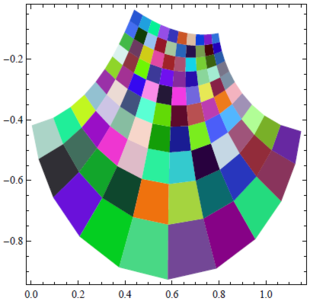14-240/Tutorial-Sep30: Difference between revisions
| Line 54: | Line 54: | ||
(1) Prove <math>A \implies B</math>. Assume <math>A</math> and derive <math>B</math>. It is not the other way around. |
(1) Prove <math>A \implies B</math>. Assume <math>A</math> and derive <math>B</math>. It is not the other way around. |
||
(2) Prove <math>A \iff B</math>. Show that <math>A \implies B</math> and <math>B \implies A</math>. |
(2) Prove <math>A \iff B</math>. Show that <math>A \implies B</math> and <math>B \implies A</math>. |
||
(3) '''This is for Boris's section only'''. When a proof requires a previous result, there are two possibilities: |
(3) '''This is for Boris's section only'''. When a proof requires a previous result, there are two possibilities: |
||
Revision as of 23:06, 4 October 2014
| |||||||||||||||||||||||||||||||||||||||||||||||||||||||||
Boris
Problem
Find a set of two elements that satisfies the following:
(1) satisfies all the properties of the field except distributivity.
(2) .
Solution:
Let where is the additive identity and is the multiplicative identity and . After trial and error, we have the following addition and multiplication tables:
We verify that satisfies (1). By the addition and multiplication tables, then satisfies closure, commutativity, associativity and existence of identities and inverses. Since , then does not satisfy distributivity. Then satisfies (1).
We verify that satisfies (2). Since , then satisfies (2).
Elementary Errors in Homework
(1) Prove . Assume and derive . It is not the other way around.
(2) Prove . Show that and .
(3) This is for Boris's section only. When a proof requires a previous result, there are two possibilities:
- (a) The result is already proved in class or in a previous homework. Then state the result and use it without proof.
- (b) The result is neither proved in class nor in a previous homework. Then prove it before using its result.
















